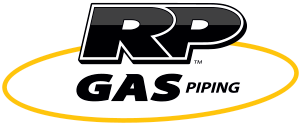Do you know what to do if you find an abandoned underground propane tank on your property?
An abandoned propane tank can pose all sorts of risks and problems for homeowners and business owners alike. When there is a propane tank left on property, it must be dealt with as soon as possible to avoid future risks, safety hazards, and costly repairs.
It is critical to proceed with caution when you discover an abandoned propane tank. Read on for everything you need to know about underground propane tank removal and risks below.
Underground Propane Tank Removal
An underground propane tank can be extremely dangerous. Here’s why:
1. Leftover Gas
If an abandoned propane tank was not properly emptied, there may be gas left inside of the tank. This residual gas can cause a fire or explosion.
2. Corrosion
A propane tank can corrode over time if not properly maintained, causing damage to its structural integrity, which can lead to hazardous collapses and/or leaks. When gas leaks into the atmosphere, it can create a flammable environment.
3. Regulatory Compliance
Abandoned tanks may be subject to regulations and codes that require proper decommissioning and removal. Failure to comply with these regulations can result in legal consequences.
4. Contamination
Propane is a hazardous substance. Leaks from abandoned propane tanks can contaminate soil and groundwater, which can lead to risks to human health and the environment.
5. Safety Risks
Underground propane tank removal can be a complicated, dangerous, and expensive process, which is why it is critical to hire an experienced company to ensure safety and that all the proper precautions are taken, particularly if the tank is in bad condition.
How to Get Rid of a Propane Tank
To mitigate the above risks, it is essential to follow the proper procedure for removing underground propane tanks, which involves removing any leftover residual gas from the tank, cleaning it, disconnecting it, and recycling it. Here’s what you should do.
1. Contact the Company that Owns the Propane Tank
If you can identify that a propane company owns the tank (and is still in business), contact the company and request the tank be removed. It is their property, and they should not charge you a propane tank removal fee.
2. Contact RP Gas Piping
If you live in Phoenix, Arizona, contact the trusted and experienced tank removal specialists at RP Gas Piping to evaluate the abandoned underground propane tank you found on your property. RP Gas Piping is licensed, insured, and qualified to safely and legally remove and dispose of your underground propane tank. RP Gas Piping’s trained professionals will be in compliance with all Arizona laws, rules, and regulations surrounding abandoned underground propane tanks.
3. Do Not Try to Remove the Tank Yourself
Removing an abandoned propane tank is extremely risky. If you remove the underground propane tank safely yourself, what do you do with it? You can’t dump it in the desert, city dumps won’t let you drop it off, and recycling companies won’t take it. You have hazardous materials on your hands that are regulated by Federal, State, and Local Governments. The best and safest option is to contact a professional to help you remove your underground propane tank.
Contact an Experienced Professional at RP Gas Piping for Help Removing a Propane Tank
Removing an underground propane tank is dangerous, which is why you must follow the proper procedure. Consulting with professionals who have experience in propane tank removal is critical to ensure safety and compliance. The experts at RP Gas Piping have experience removing abandoned underground propane tanks, and are here to help. Contact us today.
Additional information can be obtained here:
Arizona Department of Environmental Quality – www.azdeq.gov
If you found this article useful, here are three more to read:
What is Cathodic Protection?
The Difference between Standby Generators and Backup Generators
Gas Line Inspection and Permits: Important Information
Below are images of a large retail store after a liquid propane storage tank explosion.




